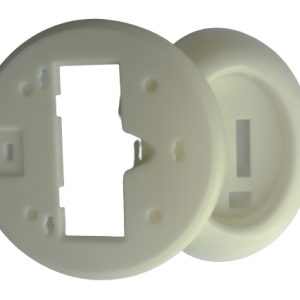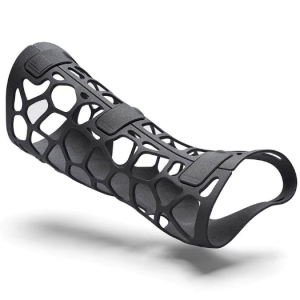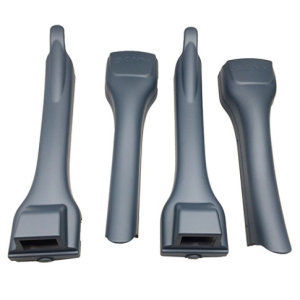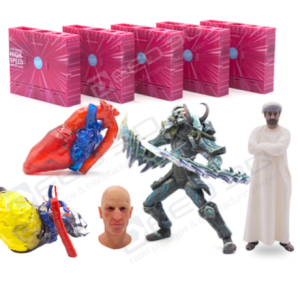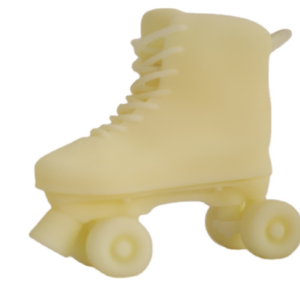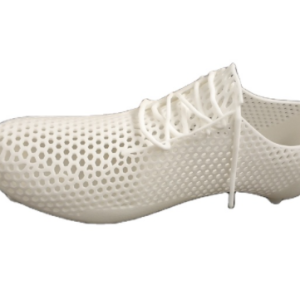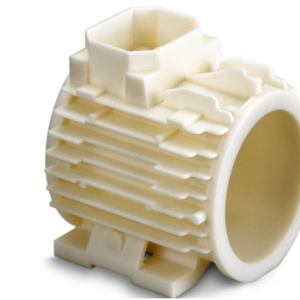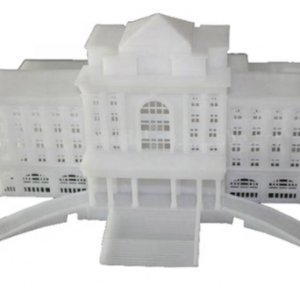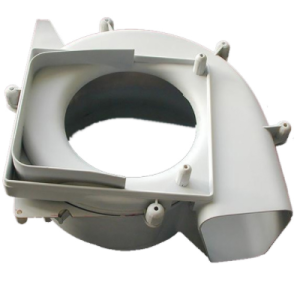Custom Metal 3D Printing
Services In Australia
Metal 3D printing has become a transformative force in the manufacturing sector, opening up innovative pathways across industries such as aerospace, automotive, medical, defence, and tooling. By building components layer by layer from digital designs, this technology makes it possible to create fully functional prototypes and final-use parts with unparalleled design freedom and material efficiency. A broad selection of metals can be used in this process, including titanium, stainless steel, aluminium, Inconel, and more, each selected according to specific performance demands like strength, corrosion resistance, or heat tolerance.
Trusted partnerships, unrivaled results CAD Deziner’s track record























What is Metal 3D Printing?
Also referred to as metal additive manufacturing, metal 3D printing is a cutting-edge production method that constructs objects from the ground up using digital 3D models. Rather than carving material away as in subtractive processes like CNC machining, this approach deposits material exactly where it’s needed, one ultra-fine layer at a time.
This build-from-scratch method not only supports highly intricate and organic designs but also reduces waste and accelerates product development cycles. Engineers and designers are no longer limited by traditional manufacturing constraints, allowing them to explore more innovative geometries and structural optimisations.
The Key Advantages of Metal 3D Printing
Precision-Engineered Geometries
Metal 3D printing excels at producing complex shapes and internal structures that are difficult or impossible to achieve through conventional fabrication. This includes components with internal cooling channels, honeycomb lattice designs, and seamless organic contours that enhance strength-to-weight ratios.
Dramatic Reduction in Material Waste
Traditional subtractive techniques often result in significant offcuts and material loss. Metal 3D printing uses only the material required to form the part, making it far more resource-efficient. This is particularly valuable when working with high-cost metals like titanium or Inconel.
Tailored Customisation and Functional Optimisation
Each component can be uniquely designed to meet the specific requirements of its intended application. Whether it’s a custom-fit medical implant or a lightweight aerospace bracket, metal 3D printing allows rapid prototyping and design iterations without the need for retooling or mould changes.
Durable, High-Performance Materials
A wide range of premium-grade metals are available, including:
- Titanium alloys for strength-to-weight and corrosion resistance
- Stainless steels for versatility and toughness
- Inconel for heat tolerance in extreme environments
These materials meet the rigorous standards required in mission-critical sectors, delivering long-lasting performance.
No Need for Tooling
Because parts are created directly from digital designs, there’s no requirement for expensive moulds or dies. This speeds up the development process and reduces upfront costs—especially for low-volume production runs or one-off specialised components.
Integration of Multiple Components
Instead of manufacturing and assembling several individual parts, metal 3D printing can consolidate them into a single, fully integrated unit. This reduces assembly time, lowers the risk of failure, and simplifies supply chain logistics.
Our Core Metal 3D Printing Technologies
Direct Metal Laser Sintering (DMLS)
DMLS is a laser-based 3D printing method that selectively melts metal powder to form fully dense parts layer by layer. Known for its precision and material performance, DMLS is ideal for producing high-strength components with complex internal features.
- How It Works: A powerful laser scans a powder bed and fuses particles based on CAD data, building the object layer by layer.
- Materials: Common options include titanium, aluminium alloys, stainless steels (316L, 17-4PH), cobalt-chrome, and Inconel.
- Benefits: Strong, fully dense parts suitable for aerospace, medical, and tooling applications.

Metal Binder Jetting
This method prints parts using a liquid binder to join metal powders together. The resulting “green part” is later sintered in a furnace to remove the binder and fuse the particles into a solid.
- How It Works: A print head deposits binder across each layer of powder. After printing, the part is debound and sintered.
- Materials: Includes stainless steel, bronze-infiltrated steel (such as X1 420i), aluminium, and more.
- Benefits: Faster production cycles and more cost-effective for large runs, with high design flexibility.

DMLS vs. Binder Jetting: Choosing the Right Approach
When selecting the appropriate 3D printing process, the decision largely depends on your specific use case:
Overview of Direct Metal Laser Sintering
- DMLS is the preferred option when strength, tight tolerances, and full density are essential. It’s widely used in industries requiring high structural integrity and detail.
- Binder Jetting, on the other hand, offers faster build speeds and more economical large-scale production. It’s ideal when finish machining is acceptable and time-to-market is a priority.
Material Capabilities by Process
DMLS-Compatible Alloys
- Aluminium AlSi10Mg: A lightweight alloy ideal for aerospace and automotive.
- Stainless Steel 17-4: Strong and corrosion-resistant, used in tooling and industrial applications.
- Stainless Steel 316L: Excellent corrosion resistance, widely used in marine and chemical environments.

Metal Binder Jetting Options
- X1 Metal 420i: Stainless steel infiltrated with bronze, offering good mechanical properties for general applications.
- Additional Finishes: A range of six finish types is available, allowing aesthetic and functional tailoring post-production.

Real-World Applications of Metal 3D Printing
Advanced Tooling and Fixtures
Manufacture jigs, dies, and custom fixtures with internal cooling paths and conformal shapes, leading to better thermal management and higher durability. These solutions are ideal for high-performance industrial production lines.
Aerospace and Defence
Create structurally optimised aerospace components that are lightweight yet strong. Components such as turbine blades, brackets, and housings benefit from the precision and weight savings achievable through metal 3D printing.
Automotive Engineering
Metal 3D printing is accelerating the development of high-efficiency powertrain components, custom exhaust systems, and lightweight brackets, all while supporting rapid prototyping and functional testing under real-world conditions.
Medical Devices and Implants
Personalised prosthetics and surgical implants can be 3D printed using biocompatible metals, allowing exact patient-specific geometry, porosity for osseointegration, and faster delivery times.
Robotics and Consumer Products
Engineers are using metal additive manufacturing to prototype and produce functional robotic grippers, brackets, and lightweight structural parts with reduced assembly requirements and improved mechanical performance.
Why Partner With CAD Deziners?
Infinite Configuration Possibilities:
Choose from an extensive array of metals, finishes, dimensional tolerances, part markings, and official certifications to match your project’s technical and regulatory needs.
A Seamless, Hassle-Free Experience:
From digital file submission to doorstep delivery, CAD Deziners handles every aspect of production. There’s no need for you to coordinate with multiple suppliers or manage post-processing logistics; we’ve got it covered.
Rigorous Quality Control Standards:
Each part undergoes a full inspection process:
- Visual review for surface integrity and finish
- Dimensional verification against your CAD model
- Functional testing, where applicable
- Surface quality evaluation to meet your performance standards
Our goal is to ensure that you receive a reliable, production-ready component every time.
Selective Laser Melting (SLM)
Selective Laser Melting, or SLM, is one of the advanced metal 3D printing techniques we specialise in. We’ve successfully delivered high-precision metal components for a wide range of clients across industries using this cutting-edge method.
SLM is compatible with many widely-used metal powders such as aluminium alloys, nickel-based materials, steels, and iron composites. The outcomes it achieves with these materials are consistently exceptional, offering both strength and detailed accuracy.
The process relies on extremely high energy to fully melt the metal powder, turning it into a liquid state. This molten metal is then solidified in precise layers, allowing us to build complex parts exactly to the client’s specifications. The high level of control makes it ideal for producing detailed and reliable components to tight tolerances.

Material Used For Metal 3D Printing
| Material Type | Surface Finish | Minimum Feature Size | Minimum Wall Thickness | Maximum Build Volume (mm) |
|---|---|---|---|---|
316L Stainless Steel (Laser Sintering) | 316L Stainless Steel (Laser Sintering) | 0.1 mm | 0.1 mm | 220 × 220 × 250 |
420 Stainless Steel (SLM) | Uniform, refined finish | 0.2 mm | 1.5 mm | 760 × 390 × 390 |
Aluminium Alloy (SLM) | Smooth, metallic surface | 0.2 mm | 1.5 mm | 270 × 220 × 320 |
316L Stainless Steel (DMLS) | Fine, matte texture | 0.1 mm | 1.0 mm | 220 × 220 × 250 |
MS1 Tool Steel (DMLS) | Fine, matte texture | 0.1 mm | 1.0 mm | 220 × 220 × 250 |
Brass | Polished, high gloss finish | 0.1 mm | 0.8 mm | 89 × 89 × 100 |
Bronze | Polished, high gloss finish | 0.1 mm | 0.8 mm | 89 × 89 × 100 |
Copper | Polished, high gloss finish | 0.1 mm | 0.8 mm | 89 × 89 × 100 |
Our Projects
